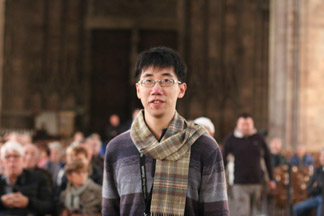
高楠
GAO Nan
Although the first Sino-German joint design course, has now come to an end, the study- and discuss-scene of free-style, no matter in Nanjing, Changzhou or in Germany is still vivid in my mind. German classmates like free discussion atmosphere like outdoors with sunshine. Such kind of environment allows us Chinese students feel freedom and a desire to participate in. What makes me pleasantly surprised is that at the end of the discussion, German students can quickly locate themselves suitable roles. Organization and teaching methods have given us students enough support, and also enough flexibility of imagination and freedom. It’s close half a day once to report about the progress of our work. Mostly German professor and Chinese professors will come to each group to get informed of the progress, and then asks if we need help. If some group miss the guidance of Professor, an internal discussion will be arranged.
Besides improving my working skills, the Sino-German joint design course opened up my horizons. During visiting the “Zollverein” and “Emscher Fluss” in Germany’s Ruhr industrial area, through interaction with local institutions and university professors, as well as the exchange of Chinese experts, I have seen diversified protection and transformation strategies and ideas of industrial heritage of “the world cultural heritage” level. I hope these ideas can inspire China’s industrial heritage transformation design. Finally, I want to say this learning experience is beneficial for my future work.
